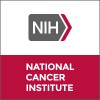Chemotherapy and HAART to Treat AIDS-related Primary Brain Lymphoma
AIDS-Related-Primary Central Nervous System Lymphoma

About this trial
This is an interventional treatment trial for AIDS-Related-Primary Central Nervous System Lymphoma focused on measuring Human immunodeficiency virus, Acquired immunodeficiency syndrome, High Dose Methotrexate, Methotrexate, Rituximab, CNS Lymphoma, Central Nervous System Lymphoma, AR-PCNSL, Epstein-Barr virus
Eligibility Criteria
INCLUSION CRITERIA: Positive human immunodeficiency virus (HIV) serology (previous records acceptable) Diagnosis of Primary Central Nervous System Lymphoma Confirmed histopathologic diagnosis by National Cancer Institute (NCI) Laboratory of Pathology If tissue diagnosis is not feasible for any reason, such as undue risk to the patient to acquire tissue diagnosis, the following will be accepted as confirmed Acquired immunodeficiency syndrome-related primary central nervous system lymphoma (AR-PCNSL) diagnosis: Positive brain fluro-2-deoxy-d-glucose positron emission tomography (FDG-PET) and Epstein Barr Virus (EBV) detected in the cerebrospinal fluid (CSF) using polymerase chain reaction (PCR) Age 18 years or greater Eastern Cooperative Oncology Group (ECOG) performance less than or equal to 0-4 Ability to understand and willing to provide informed consent If patient unable to understand informed consent, a previously designated durable power of attorney for healthcare or an individual with legal authority may substitute in this capacity Assignment of a durable power of attorney for healthcare if not already done EXCLUSION CRITERIA: Prior therapy for central nervous system (CNS) lymphoma Steroids not an exclusion Evidence of lymphoma outside of the central nervous system Ocular involvement will not exclude Multidrug resistant HIV not amenable to long-term suppression based on either or both: Clinical history of poor adherence to multiple antiretroviral drugs deemed sufficient to render effective HIV control unattainable; HIV mutational analysis (genotyping and/or phenotyping) that reveals high-level resistance to more than 1 class of anti-HIV drugs such that a combination regimen comprised of agents from at least two drug classes can not be devised to suppress HIV long-term. Refusal to adhere to highly active antiretroviral therapy (HAART) Concurrent malignancy other than Kaposi sarcoma, resectable squamous cell or basal cell skin cancer, or T1 anal cancer amenable to surgical resection. Heart failure, Class IV by New York Heart Association criteria Chronic Liver Disease, Child-Pugh class B or C Pregnancy Refusal to practice contraception during chemotherapy. Any condition or set of circumstances that the Principal Investigator or Protocol Chair interprets as creating undue risk to the patient by participating on this study or would make the patient unlikely to comply with the study.
Sites / Locations
- National Institutes of Health Clinical Center, 9000 Rockville Pike
Arms of the Study
Arm 1
Experimental
Rituximab, High-Dose Methotrexate & Leucovorin Treatment
Induction treatment cycles with rituximab, high-dose methotrexate and leucovorin will be administered every 2 weeks for 6 cycles. Two additional consolidation cycles of high-dose methotrexate without rituximab will be administered at 4 weeks and 8 weeks following completion of the combined therapy.
Outcomes
Primary Outcome Measures
Secondary Outcome Measures
Full Information
1. Study Identification
2. Study Status
3. Sponsor/Collaborators
4. Oversight
5. Study Description
6. Conditions and Keywords
7. Study Design
8. Arms, Groups, and Interventions
10. Eligibility
12. IPD Sharing Statement
Learn more about this trial
